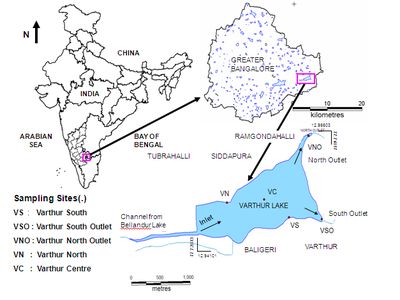Durga Madhab Mahapatra1, Chanakya H N 1,2 and Ramachandra T V1-3, *
1 Centre for Sustainable Technologies, 2 Centre for infrastructure, Sustainable Transportation and Urban Planning (CiSTUP), 3 Energy and Wetlands Research Group, Centre for Ecological Sciences, Indian Institute of Science, Bangalore – 560012, India. *Corresponding author: cestvr@ces.iisc.ac.in
Citation : Durga Madhab Mahapatra, Chanakya H.N., Ramachandra. T.V., 2011. Role of macrophytes in a sewage fed urban lake., Institute of Integrative Omics and Applied Biotechnology Journal (IIOABJ), Vol. 2, Issue 8, pp. 1-9.
|
|||||||||||||||||||||||||


